A very old specialty of Armenia, aveluk is a beautiful braid of dried wild sorrel (dock / Rumex spp). I was skeptical of dock as an edible plant for years, but once you taste your first bite of aveluk soup you'll be impressed with how much flavor a handful of dried greens can have. Here's how to make it, and what to do with it.

How to Dry Wild Sorrel
Not the sorrel most people will know, dock plants are harvested in the Spring when the leaves are fully formed and long enough to braid. I love braided food, especially prairie turnips (timpsila).
The braided plants are hung to dry in the sun, then stored and used for cooking in the winter in soups, stews and salad. Ramps or wild leek greens, and just about any green long enough to braid can be preserved this way.
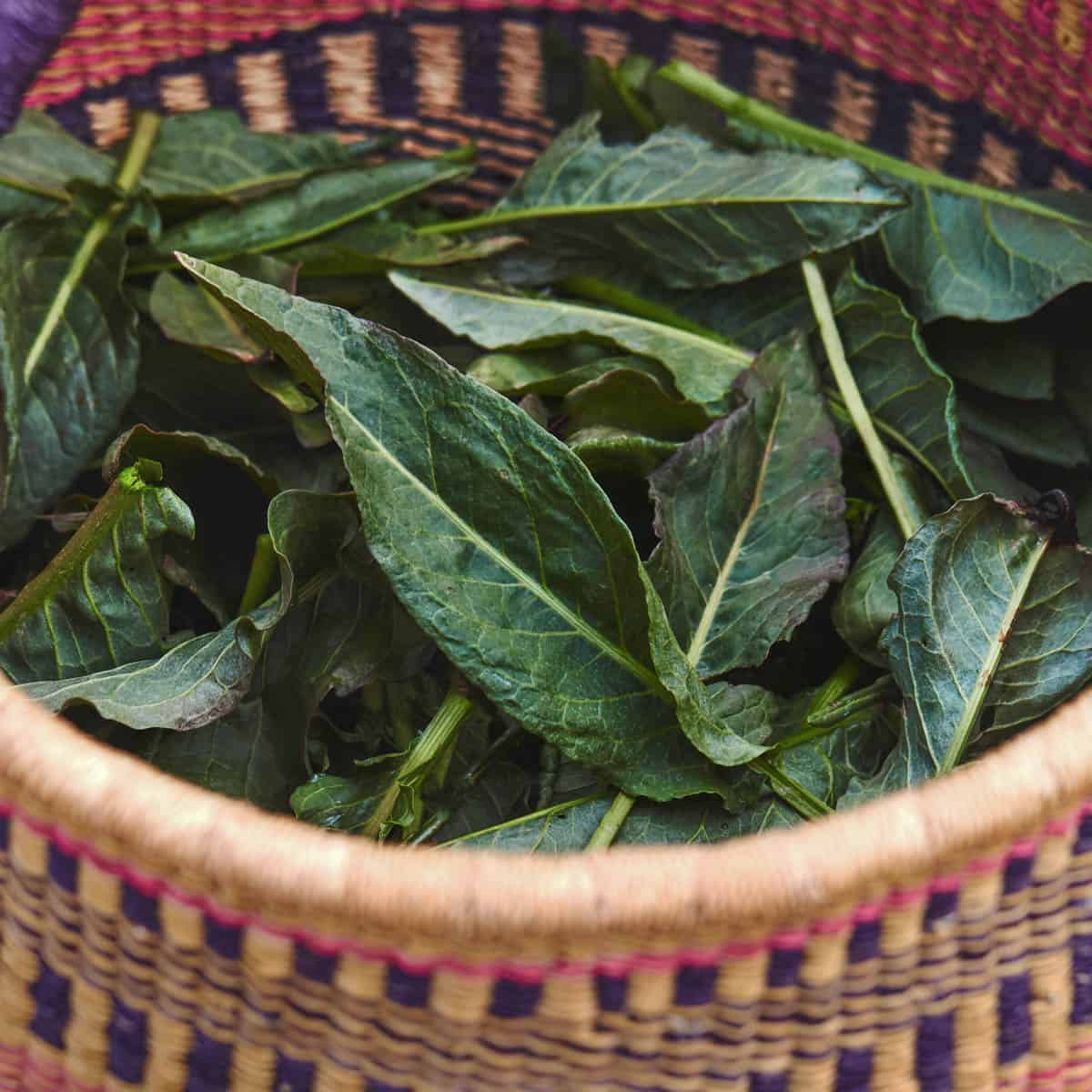
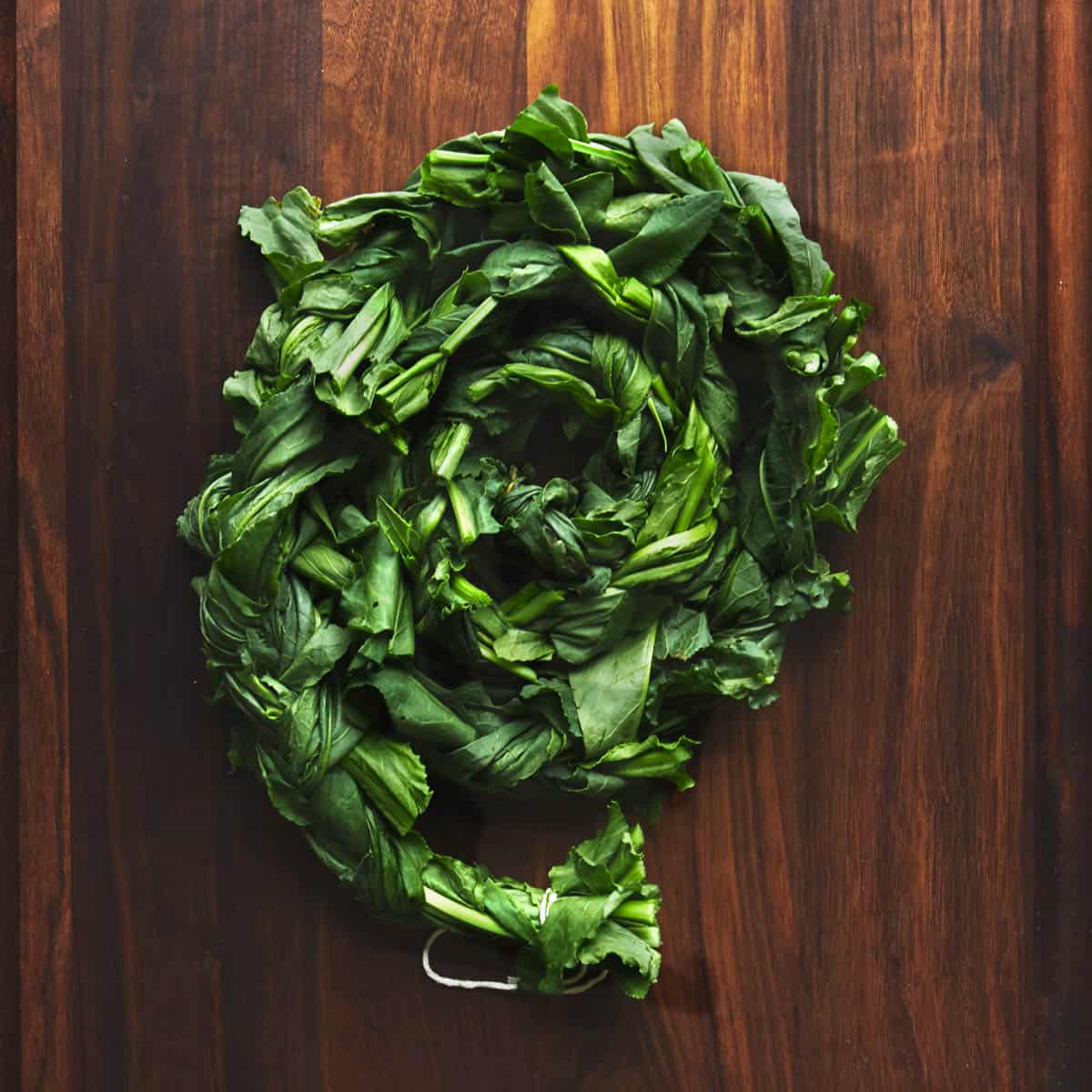
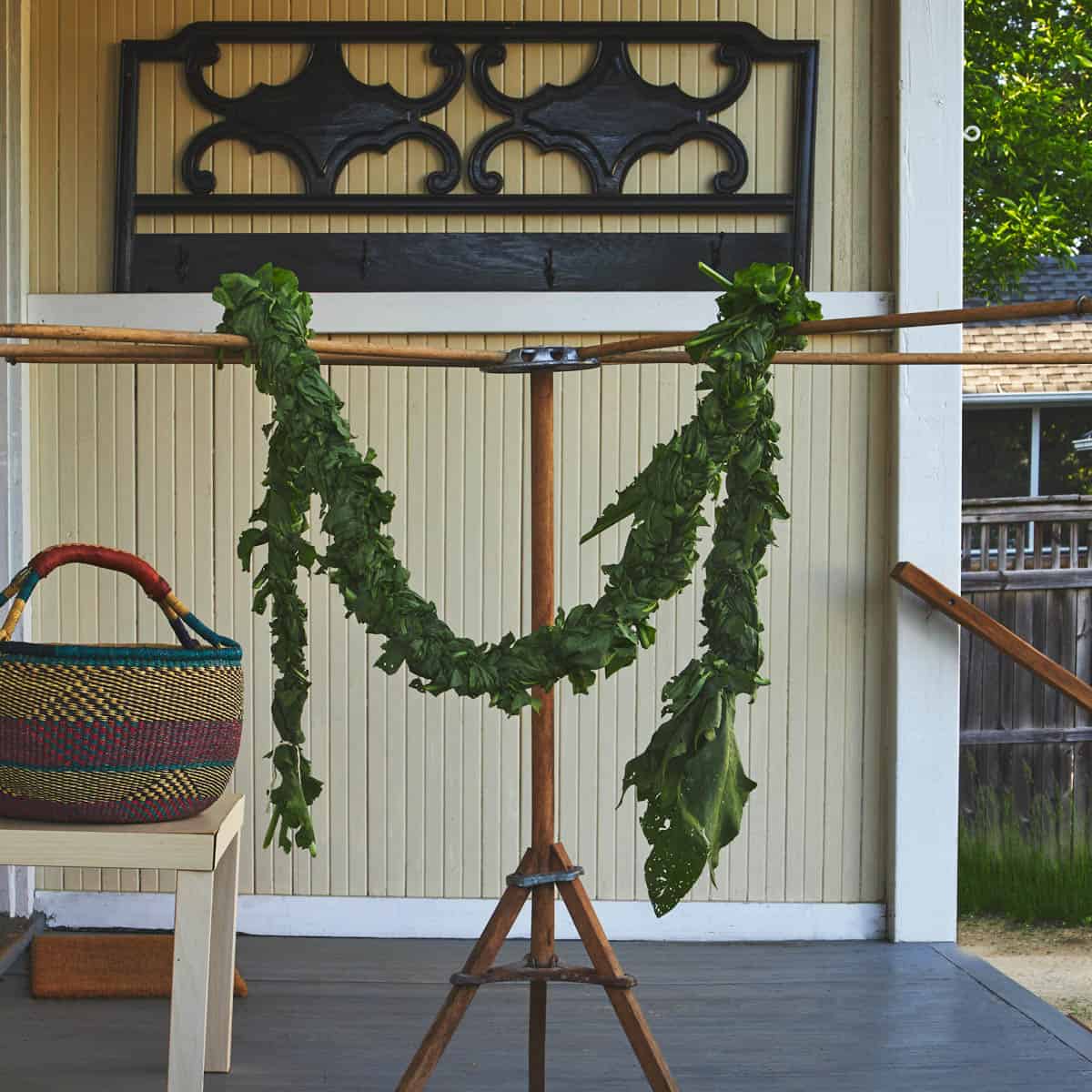
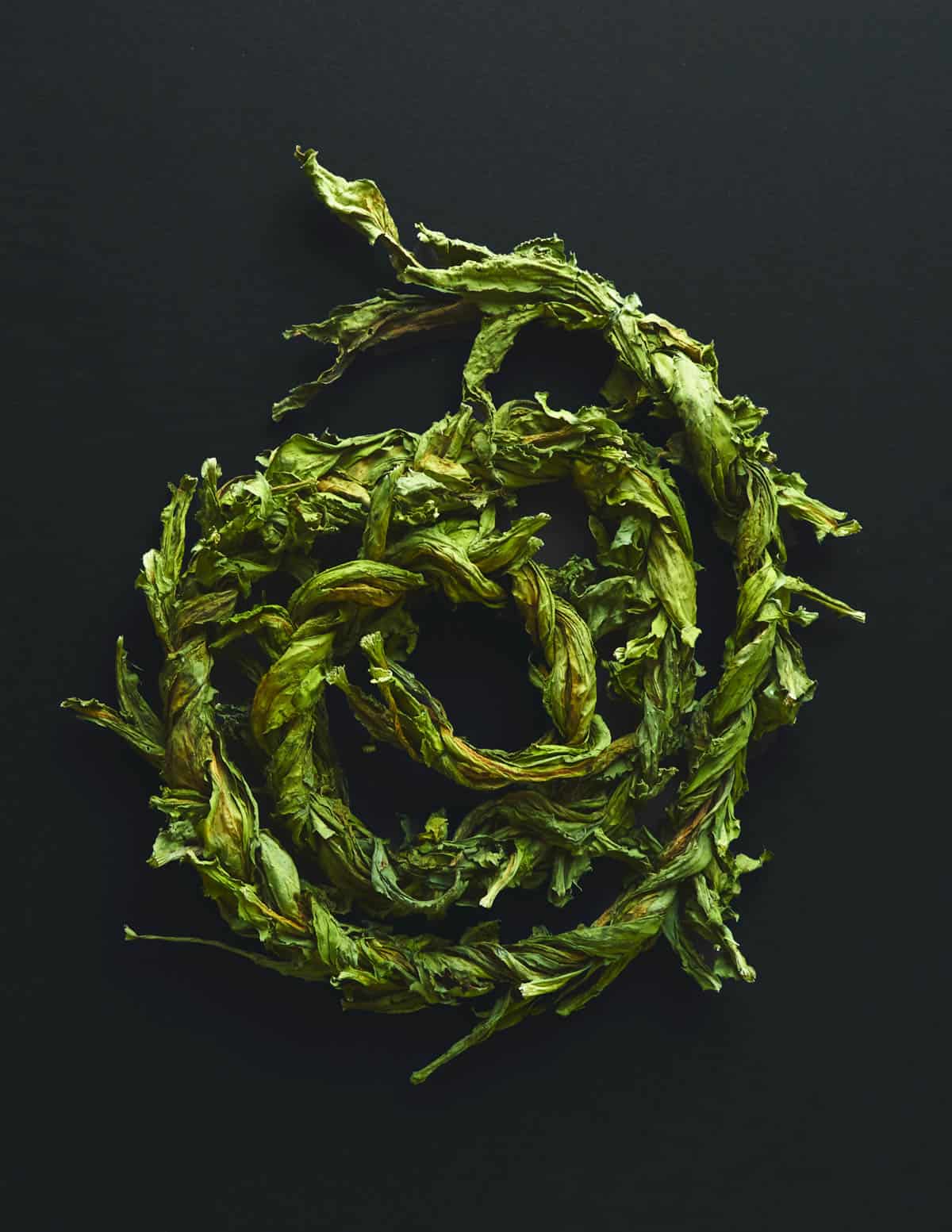
In images of traditional braids, you may see some discoloration that can happen from the greens not being dried quickly. Exposing the greens to sunlight as they dry is one of the secrets to keeping the plants green. I hang my dock in the sun, and move them to the garage after they're mostly dried.
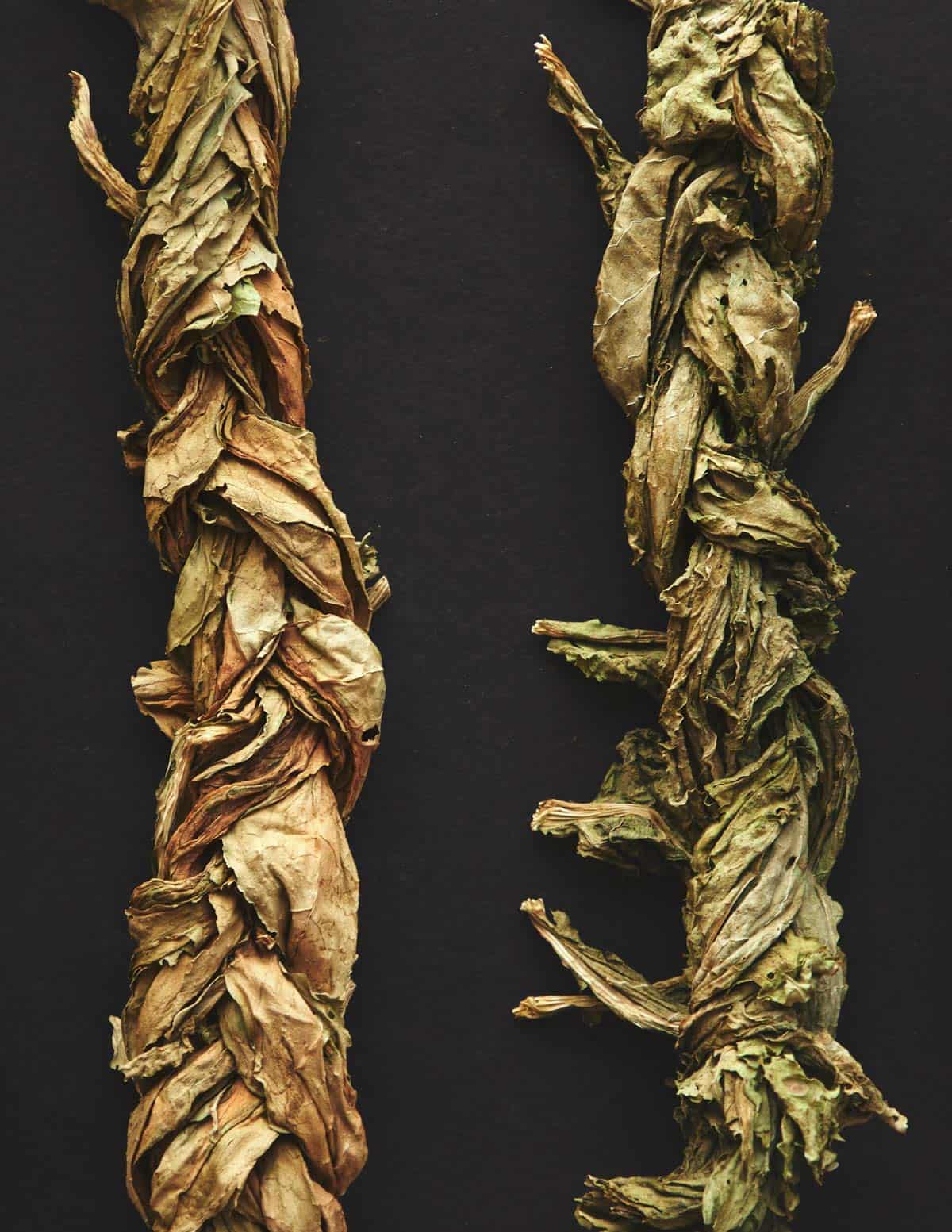
How to Make Aveluk Soup
To make the traditional soup, the greens are cut into pieces with a scissors, then softened in boiling water. The water is discarded and takes nearly all of the bitter, strong flavor of the dried greens with it. After rehydrating, you add the greens to a soup.
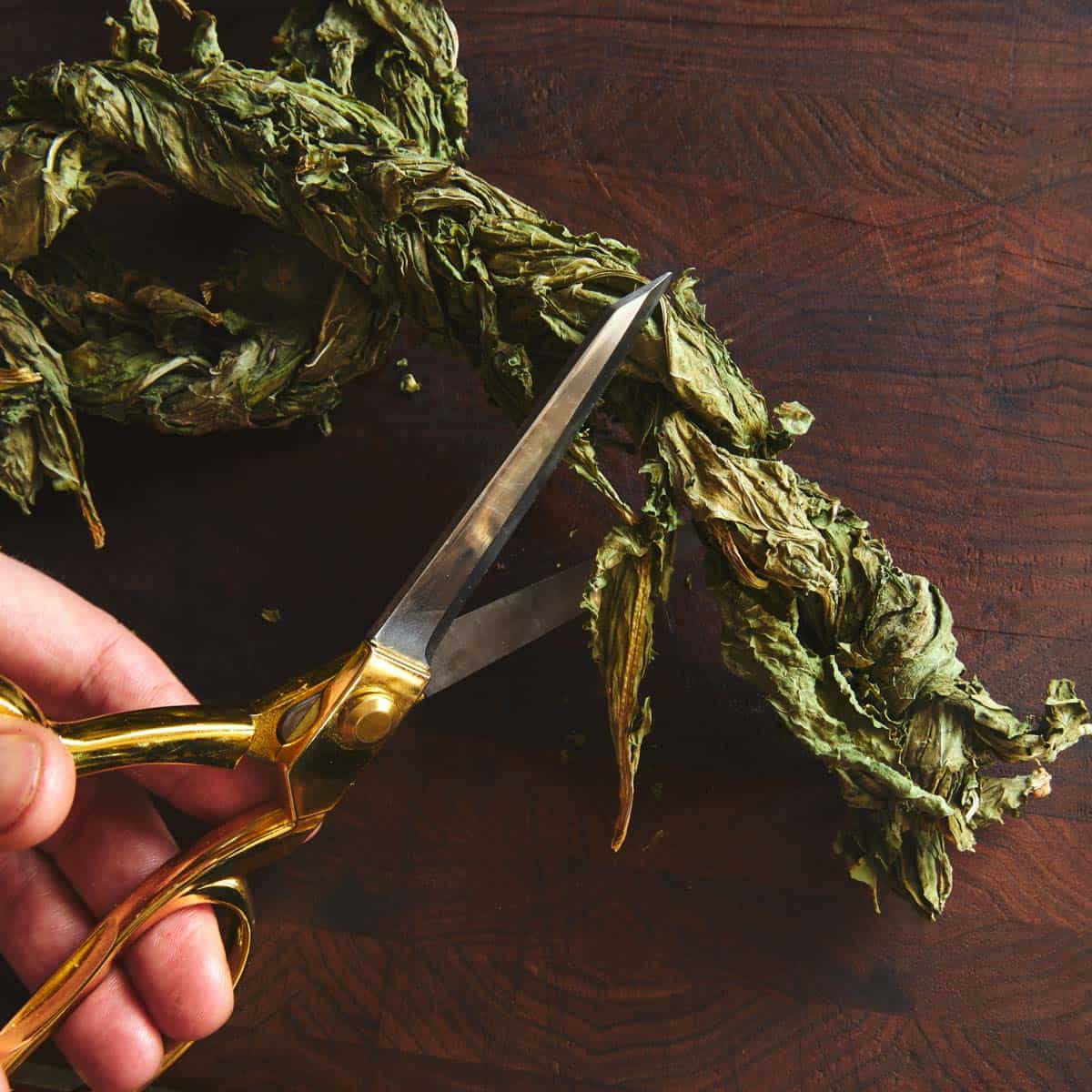

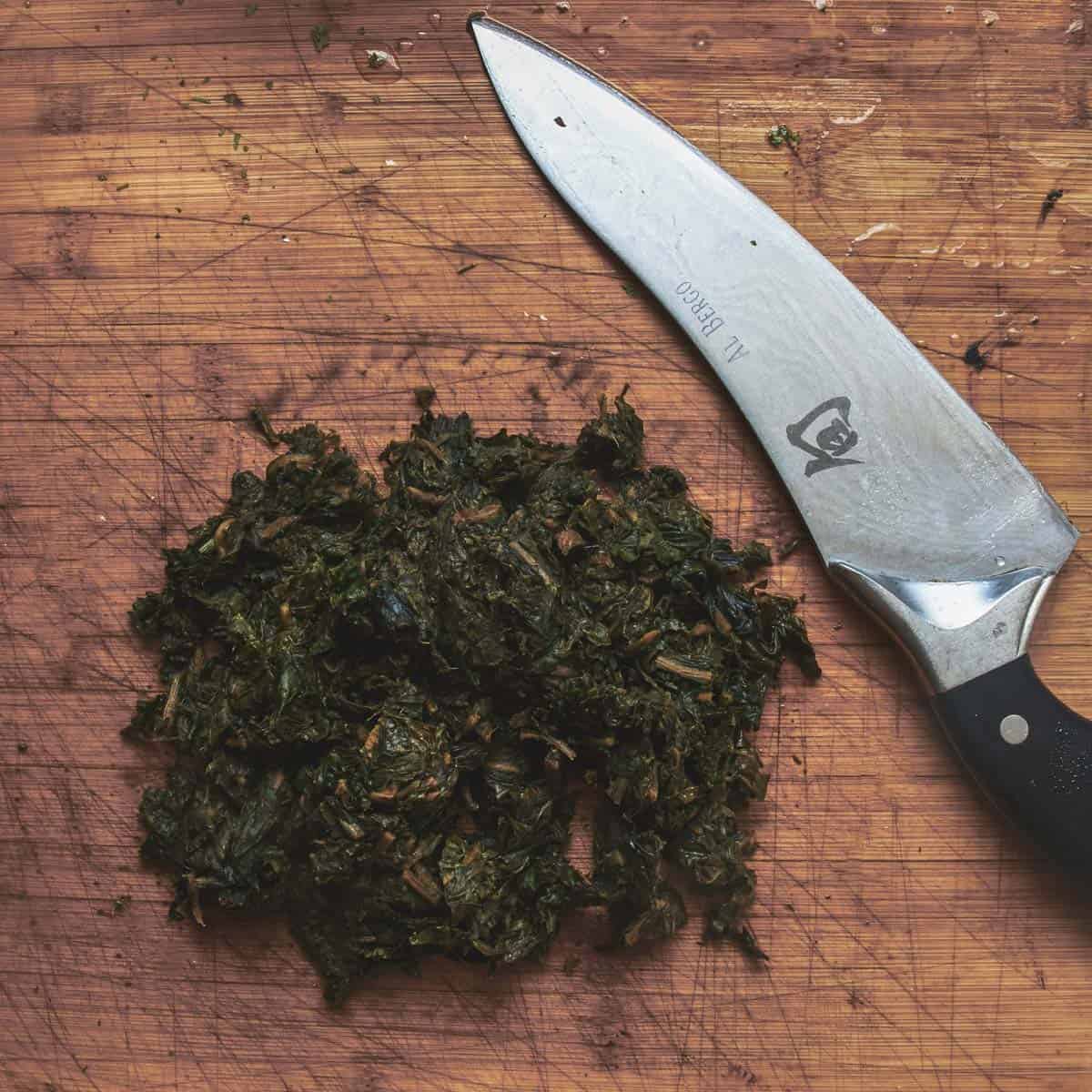

Similar to other meatless dishees around the world using wild plants, a traditional aveluk soup recipe contains a combination of starches, grains or legumes as well as nuts to make it a filling meal. The soup I've prepared for you uses potatoes, chickpeas, and is finished with a handful of nuts. I used black walnuts and shagbark hickory nuts.

Similar to Georgian culinary traditions, chopped sour plums can be added. Dried American wild plums make a decent substitute.
Other Wild Sorrel Recipes
The dried, braided greens are also used to make an aveluk salad with onions, garlic, hot chili, pomegranate and walnuts. I also make a Mediterranean dock soup with rice and lemon that's a good option for fresh dock plants.
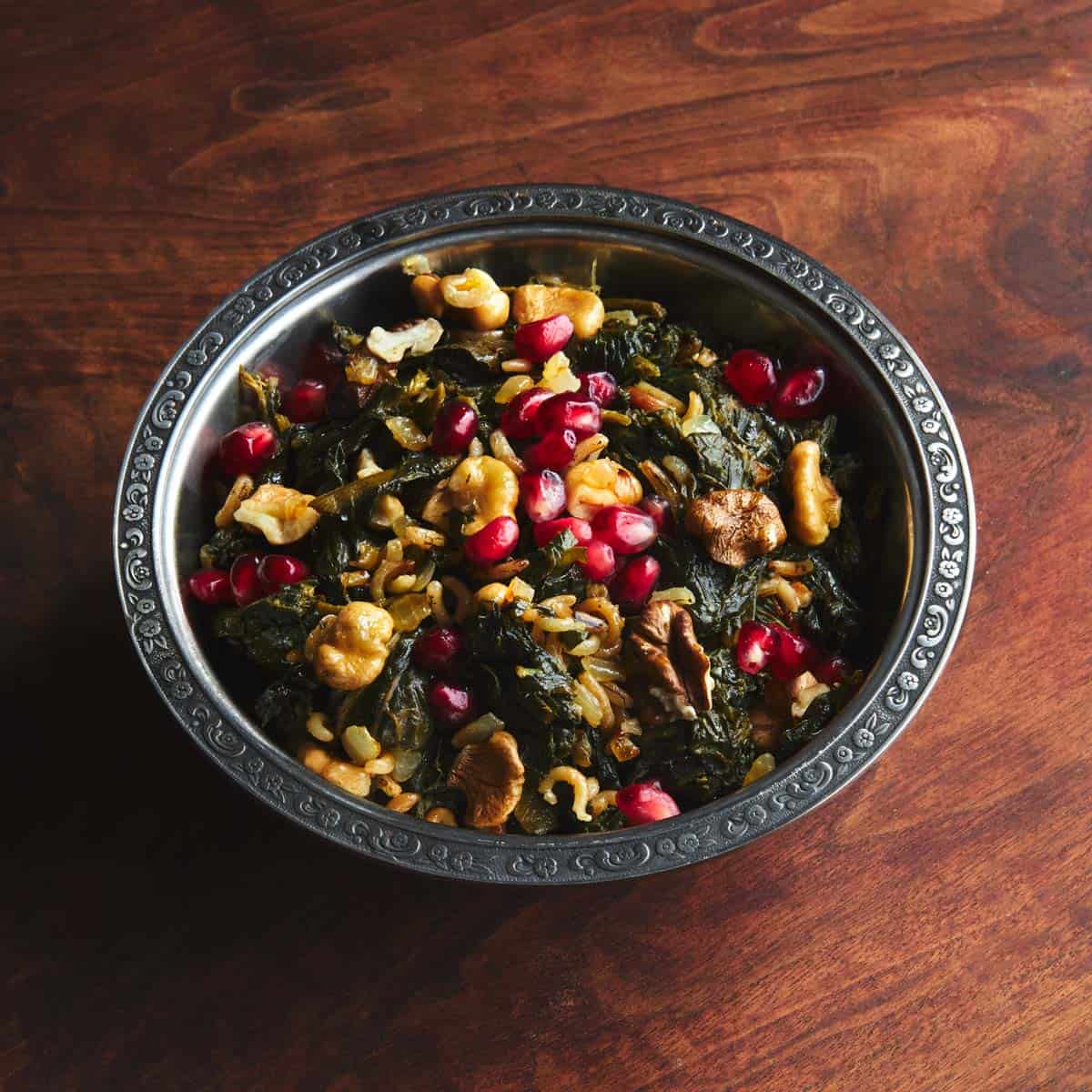
Aveluk Soup
Equipment
- 1 Drying rack or similar
Ingredients
- 1 oz dried aveluk
- 3 cups hot water
- 5 oz 1 medium yellow onion diced
- 2 medium cloves garlic crushed with the back of a knife and roughly chopped
- 2 tablespoons unsalted butter
- 3.5 cups chicken stock or vegetable stock
- 1 cup pureed canned whole, peeled tomatoes (or 2 tablespoons tomato paste)
- 1 12 oz can chickpeas
- 8 oz golden potato cut into large cubes
- Pinch of crushed red pepper optional, to taste
- Fresh chopped cilantro to taste (optional)
- 2 oz walnuts broken into bite-sized pieces
- 1 tablespoon rice wine vinegar or homemade vinegar or to taste
Instructions
- Cut the dried aveluk into 1 inch pieces with a scissors. Put the dried greens into a container and pour the hot water over them. Allow to cool. Remove the greens and squeeze them dry.
- Meanwhile, in a small 3 quart soup pot, sweat the garlic and onion in the butter until translucent. Add the potatoes, tomato and stock and bring to a boil. Turn the heat to low, add the canned chickpeas, along with the chopped greens and crushed red pepper if using. Simmer gently until the potatoes are tender.
- Pulse the soup with a hand blender a couple times to break up some of the potatoes and beans. Don’t puree the soup, you just want enough potato and beans broken up to thicken it slightly. The texture of the dried greens is an important part of the dish. Add the walnuts and cook two minutes more.
- Taste the soup and adjust the seasoning for salt until it tastes good to you. Right before serving, whisk in a dash of homemade vinegar or rice wine vinegar to taste. Serve with extra virgin olive oil and fresh cracked black pepper.


Lydia Tutunjian
I bought a pack of dried Armenian “Aveluk” on line and tried the soup recipe you have with my home made organic tomato paste and home boiled organic garbanzo beans.
It was first time I was cooking “Aveluk”. It turned out delicious with rich aroma of the greens. Loved the crunchy texture of walnuts. What a balanced and healthy meal. Thank you 🙏
Alan Bergo
Hey thanks Lydia. I just love this recipe.
Astine Megerdichian
An I use fresh sorel from my own yard plant it is little sour
Alan Bergo
Dock is a little different than sorrel, sorrel will be more sour, but you could try!
Sergey
Hey Alan, really surprised to see aveluk recipe on your site. Thank you for sharing such knowledge around the world. As an Armenian I am very proud for this. We have some other interesting greens that taste as great as aveluk, but you have to visit Armenia to get to know all this wonderful stuff. o my knowledge, Anthony Bourdain was one of the famous chefs that visited Armenia.
Alan Bergo
Hey thanks Sergey, I appreciate that.
N. MacGregor
Its already mid June and just received your latest email regarding "things to do with dock" which I found extremely interesting and I will be trying out all the recipes you included due to the fact this year (as in most years) there is an abundance of dock in my area.
In addition, I am fascinated about the technique you described for braiding green leaves in order to preserve them for later use. I hope to try this technique on a number of the wild plants in my area that I stumble upon while I am out and about, however, I have 1 question about this preservation method as follows: is it possible or recommended to use leaves from various plants in "braids" that are not young/harvested in the early spring? The reason I ask is its already mid June and I would like to try out this method but I wonder if I should wait until next spring so I can use fresh, young leaves? BTW - I am located in Southern Ontario.
Alan Bergo
Plants can be braided at any time. But, some like nettles may be more fibrous than the dock. Dock is perfect as it has long leaves and it gets tender after drying and cooking. Some plants would need to have the dried stems removed before eating. But in short, yes you can do it any time, but it’s best to use long, tender leaves
Renee Gustafson
When you braid nettles, do you use the whole plant for braiding or just the leaves,
or the tip of the plant. Since I have a nice stand of nettles close by I would like
to try it out. Love all your recipes, also got your book. Thank you, Renee
Alan Bergo
I haven’t used them. You would use the whole plant, but it would need to be the tender. Roll them with a rolling pin gently to help reduce their sting, is what I would do.
Sam Schaperow
Looks like a good recipe!
Mike G
You had me at using wild leeks. I’m thinking a chunky potato leek soup would hit the spot next fall.
Alan Bergo
I agree.
Heather
I love it! Now looking forward to braiding greens this spring! Do you think that boiling dock first and pouring off water that many nutrients are lost?
Alan Bergo
Yes, you will lose some nutrients and solutes from soaking, but there’s plenty of goodness left. Soaking the greens is traditional as the soaking liquid has a strong, bitter flavor and it would probably ruin the soup. When I really want a bowl of nutrient-dense food, I usually eat a bowl of steamed nettles or other plants. 😉
Dorothy Bacon
I had dried sort of fermented greens in Nepal called gundruk(sp) I think. Very nourishing , used as cold medecine, chicken broth base of course. Heard of it?Dotty
Celine Perrier
Like Chris Larson, I’ve been looking for a way to preserve greens for the winter. I grow hydroponically right now, but this, this changes everything! Thanks Chef!
Alan Bergo
Yeah I've been sitting on this for a year and now is the perfect time to share. I can't wait to do it with nettles and ramp leaves for '23. The greens regain lots of volume as they cook, and the fact that you can make a soup to serve 4 people from just 1 oz of dried greens is a testament to traditional food ways, I think.
Chris Larson
Wow! I've been mulling over simple ways (beyond freezing or drying as a crumble) to preserve leafy greens for winter use for a while. Going to have to try this technique. It has the added bonus of being attractive to look at.
Alan Bergo
Yes it's great and the flavor and texture are so good. You can use any green long enough to braid.
April
Well, I see you already answered this! Palm on face.
April
I love your posts and save every one!
We have loads of regular (straight leaf) dock but curly dock is scarce. Is the straight leafed dock a good substitute?
Alan Bergo
Thanks April. If you can find some, I've heard patience dock is very good too.
Nancy Oviatt
This looks delicious. We have a large leaf dock and a smaller leaved one with frilly edges that I call curly dock here (VA). The curly dock has the lemony/ sour taste where the larger one has fairly bland taste. While both could be dried and used this way, do you think it’s better for me to seek out the sour tasting ones?
Alan Bergo
Hey Nancy, of course you can use either, but I would use the curly dock.